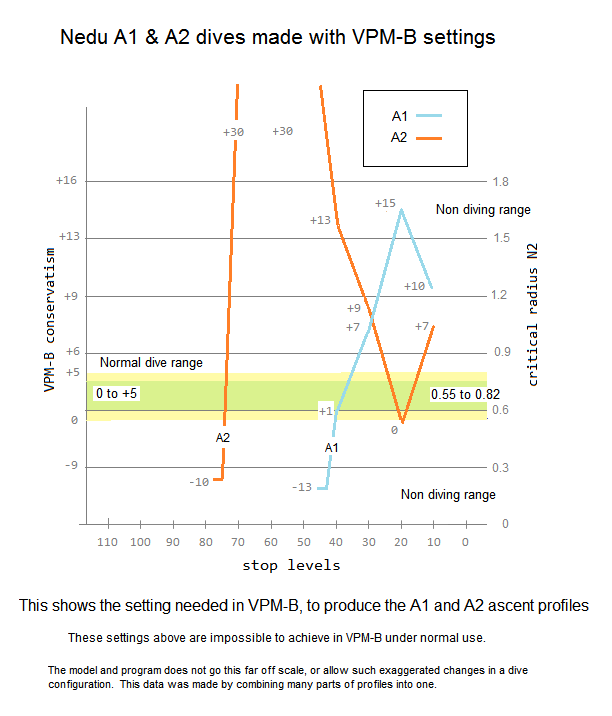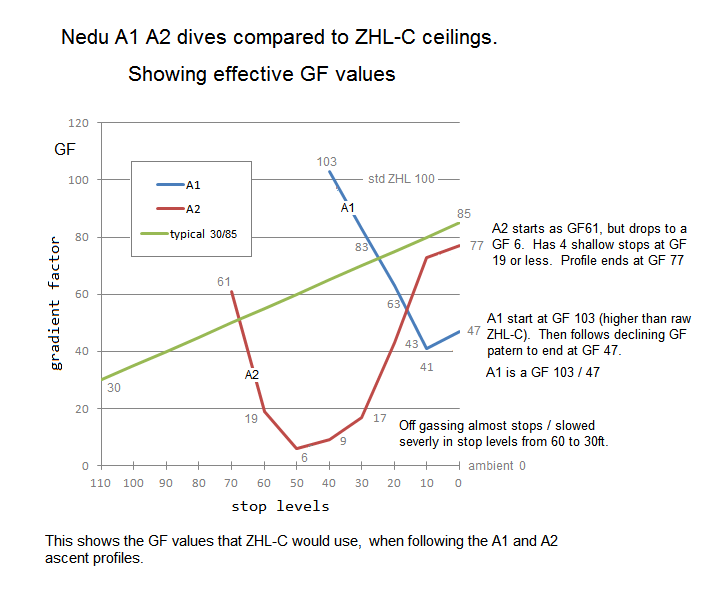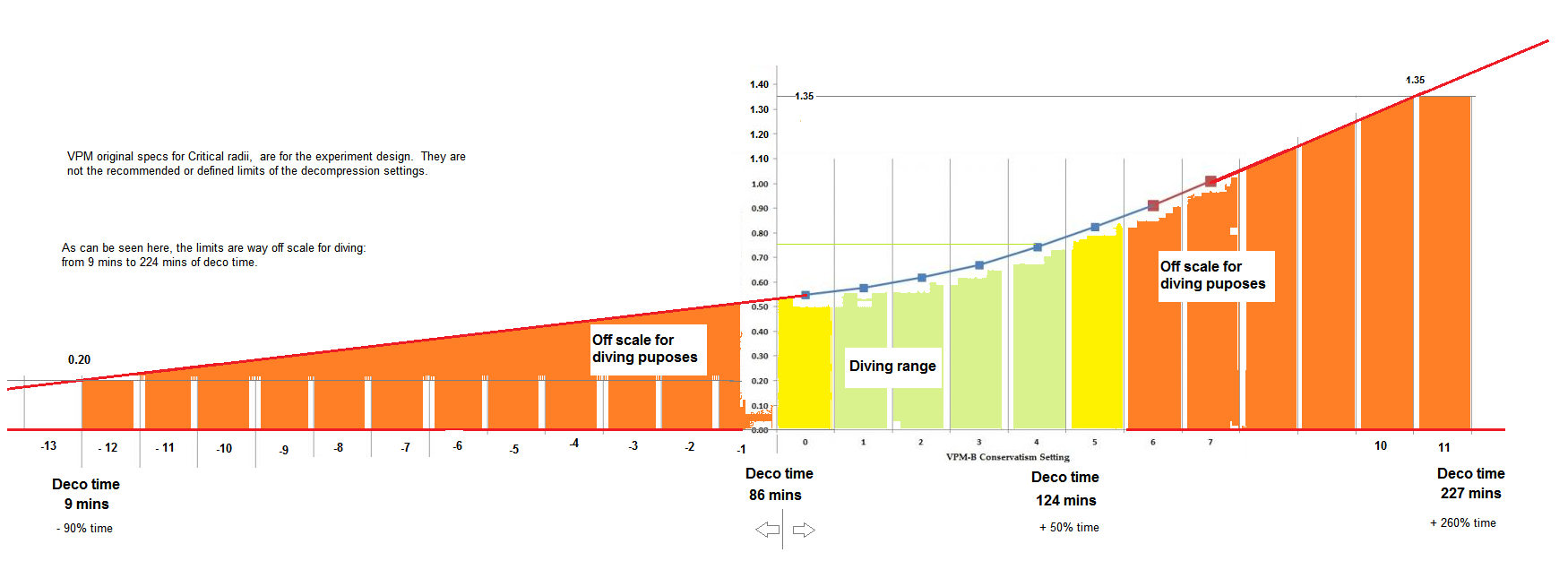I think you are actually missing something. What you are saying here, and in subsequent posts, is that the deep stop time in the NEDU A2 (deep stops) schedule needed to be compensated for by additional shallow stop time - that is the essence of the “shallow stops” paradigm. Under this shallow stops paradigm, you can do as [many] deep stops as you want, as long as they are part of a longer decompression - this can be extended all the way to doing for first stop essentially at the bottom and doing a saturation decompression. However, the “deep stops” paradigm is that time spent at “deep stops” is more than compensated for by reduced time at shallow stops. The NEDU test was a comparison of these two paradigms – hence the title, “Redistribution of decompression stop time…”.
Yes, David, this is exactly what I was trying to say. It's been pretty obvious since 2003 that the deep stop paradigm where it relates to shortening shallow stops has serious problems because by definition it leads to a deeper average depth for a given run time. Your profile was extreme which confused me because it looked more like muti-level stages than "stops" so it made me think something was wrong. However, I guess by taking an extreme example you've managed to illustrate the point that deep stops and average depth are each other's co-joined twins and therefore deep stops can't be compensated for by shorter shallow stops and in fact requires longer shallow stops. In your case it would have required a 6m stop that was 25 minutes longer than it was. It's blatantly obvious that it should work like this and it's good that the science backs it up.
If you accept the notion that the NEDU deep stops (A2) schedule resulted in more DCS than the shallow stops (A1) schedule because of continued gas uptake into slow compartments and consequently greater supersaturation in those compartments later in decompression – and this is the most plausible explanation – then any schedule showing this pattern is likely to be similarly disadvantaged.
Yes, this is what I was trying to point out by putting it in terms of average depth.
In an analysis of the time-integral of supersaturation (to assess both the magnitude and the duration, because both are important to bubble formation and growth) in fast and slow compartments for half a million alternative schedules with different distributions of 174 minutes of stops, we found that every schedule with any amount of time allocated to deeper stops than the A1 schedule resulted in the same disadvantageous pattern of increased and longer lasting supersaturation.
Which is intuitively exactly what you would expect.
The hypothesis that one of these alternative deep stops schedules might have been better than the A1 shallow stops schedule is to ask the question whether that alternative schedule could be better to despite this disadvantageous pattern of supersaturation. Maybe, but on the basis of currently available evidence, I do not see that as a plausible hypothesis.
Well... yeah. Any profile that would have shortened the deep stops and gotten the diver shallow earlier (making the average depth shallower over the run time) would have been better than the schedule you used. I started out with the disclaimer that I thought I must have been missing something and having read what you wrote above I get it. It's not so much about this specific schedule as the principle that ANY schedule following the same pattern will be similarly disadvantaged to one degree or another. That caused the coin to drop. Thanks.
R..







